The Orville: New Horizons – Latter-Season Review

*NOTE: SPOILERS AHEAD*
The third season of Seth MacFarlane’s The Orville has finished its run, but its future lies in serious doubt at this point. After starting off with an incredibly strong first half of the season, New Horizons settles into a more formulaic storytelling mode before buttoning things up haphazardly with the final episode.

Still, it’s a great ride to the end, even if those critical of MacFarlane won’t touch anything he creates for all the beer in the brewery. While reviewing the first half of the season, I relied on the old adage that a good critic should always separate the art from the artist, even if said artist is making that job difficult.
In the end, I’ve come to appreciate what The Orville stands for amongst its extreme-radical Left-wing contemporaries and peers. I’ve also relied on its main influence, Star Trek: The Next Generation, as a reference tool to see if the show managed to stack up. I make no apologies for claiming that it has, even if the second half of the season missteps in key areas.
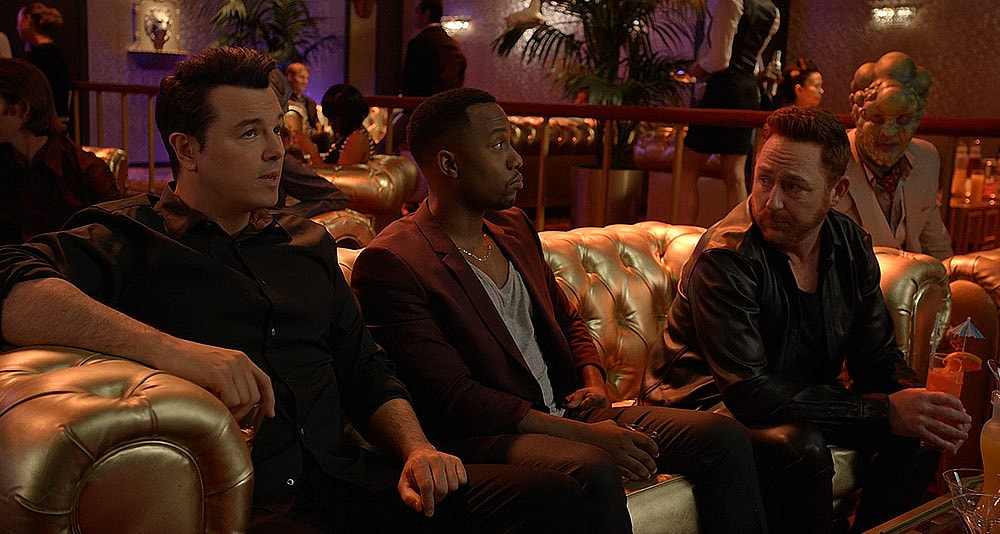
Episode 6: Twice In A Lifetime
The sixth episode of the season essentially jettisons the clever political fence-sitting of previous stories in favor of laying more ground that everyone can relate to. It begins when LaMarr manages to upgrade existing Aronov device technology from previous episodes to send objects both great and small back through time.

Obviously, this creates a series of immense moral and ethical controversies which causes the Union to order its transfer to a secure facility. While on route, the Orville is attacked by a fleet of Kaylon ships seeking to secure the technology for themselves, prompting Gordon Malloy to try and destroy the device by overloading it.
Unfortunately, Malloy is caught in a massive energy release and thrown back through time to the year 2015. The Orville attempts to follow, but ends up arriving on Earth a full ten years later, in 2025. During that time, Malloy has come to terms with his plight and decided to make a life for himself in the 21st century.

In so doing, he ends up in violation of numerous temporal laws, especially as they pertain to the family he has created with Laura, a character from his own past. While Ed and Kelly attempt to reason with him, Isaac and Charly are forced to work together to locate dysonium to power the device and make it home.
Malloy, however, has no intention of leaving, and it puts his relationship with Ed in serious jeopardy. Eventually, Mercer reveals to Malloy that he will travel back to 2015 and rescue him before he has a chance to lay down roots in the 21st century, thereby nullifying his marriage, and his child.

It’s an incredibly poignant episode for anyone who ever thought they could handle the trauma of isolation in an altogether alien climate. The proof of this becomes evident in the final act when Ed and Kelly tell Malloy of just how far he was willing to go to stay with his family. Malloy shrugs it off as no big deal, but audiences knew better.
In short, it’s a temporal time travel episode meant to cut down on the budget, yet somehow manages to tell a great story. The only bad part of the story is when Charly confronts Isaac over the real reason for her hatred of him and his fellow Kaylon. It is revealed that Charly had a secret lesbian crush on her best friend who was killed during a Kaylon attack.
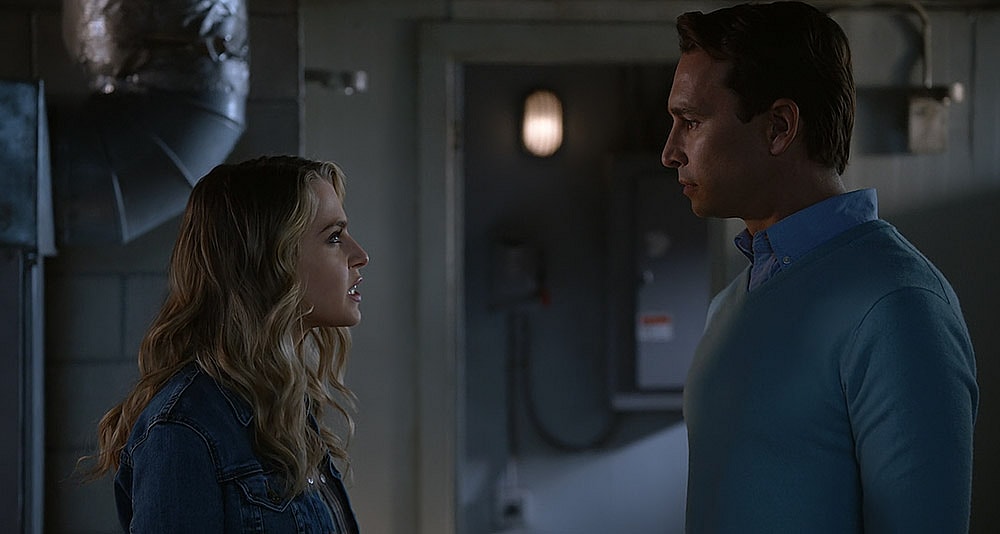
The episode was going so well up until this point, but here, it’s undone by the sheer stupidity of yet another round of LGBTQ patronization. Charly is the quintessential lipstick lesbian trying to queer-bait the audience to score points, and it doesn’t work. It’s also yet another symbol of the Left’s refusal to allow two same-sex characters to have a deeply platonic bond of sisterly or brotherly love, as opposed to a sexual one.
Episode 7: From Unknown Graves
This episode manages to score some big hits, but it also introduces a few missteps that would later plague the final episode. The story has two parallel events taking place – an attempt to normalize diplomatic negotiations with a misandrist alien culture known as the Janisi, and a cyberneticist working alongside a Kaylon able to feel human emotions.

The latter has direct ramifications for multiple members of the crew, specifically Isaac and Charly. For Isaac, the prospect of developing emotions means he would be able to expand his personal horizons, while getting closer to love his love interest, Dr. Claire Finn. For Charly, it’s an opportunity for her to hear the Kaylon side of the story, which is told through detailed flashbacks.
For the first time, audiences get a crash course in Kaylon history, from their humble beginnings as automatons serving their biological masters, to the eventual slave class that were tormented for the sadistic amusement of those very same creators. It’s an opportunity to provide a rationale for the Kaylon wiping out their creators, and targeting other biological life forms.

RELATED: 10 Least Woke TV Shows To Detox The Mind
It’s also an opportunity to see someone take the horrific premise insinuated at the end of the classic Star Trek: TNG episode “Measure of a Man,” and show the reality of what might come to pass. Points for that.
On the flip side is the dicey relationship between the female Orville crew members attempting to form dialogue with the Janisi, while their male counterparts pretend to be subservient inferiors in an attempt to ease tensions. Kudos for MacFarlane and the writers for presenting another side of the argument in an era where misandry isn’t just popular – it’s been institutionalized.

Rather than play up the “men are stupid” and “girl power, rah, rah, rah” ideology of the far-Left, the story actually plays out much differently. When Mercer reluctantly reveals to the Janisi that he is the Captain of the ship, rather than Commander Grayson, it threatens to derail the entire diplomatic process.
However, Ed and Kelly agree to use the latter’s unfaithfulness to show that a female, rather than a male, was in the wrong, but Mercer still forgave her, and now works alongside of her. This is part and parcel of the episode’s stronger message that men and women have their emotional and physical differences, yet can still work together as equals.

Other elements of the episode aren’t nearly as effective, however. John LaMarr’s sexual relationship with Talla was supposed to set up a future narrative, but it quickly becomes clear that nothing is going to happen here. Aside from a few cheap and unexpected laughs, it offers nothing substantial to the overall story.
Episode 8: Midnight Blue
Midnight Blue is a episode that feels like it goes on for an eternity, but what’s there is pretty solid. It migrates between several different story arcs that ultimately come full circle by the time the episode wraps up, with devastating consequences for the future of the Union.

It all starts when the Orville shows up to a colony comprised exclusively of biological Moclan females who fled their home planet and its all-male culture, rather than be subjected to sex reassignment surgeries. It’s an opportunity for Topa, who recently transitioned back to her true biological female self, to learn more from other Moclan females.
This includes her inspiration and idol, the great Heveena, who once spoke before the Moclan delegation in defense of her. The two quickly form a bond that goes sideways when Heveena loses track of her responsibilities as an adult, and allows her ideological crusade to endanger Topa’s life.
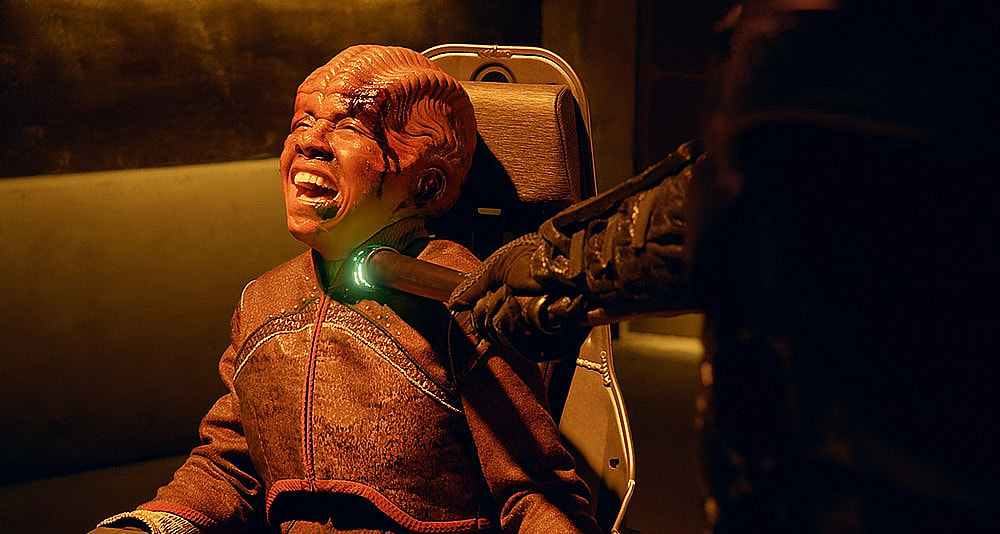
Topa is soon abducted by the male Moclan survey party and taken to a secure facility where she is tortured for information regarding Heveena’s smuggling of females off planet. This is a direct violation of the Moclan-Union treaty regarding the colony, which would allow the Moclans to destroy it, and all the females within.
Bortus and Kelly track Topa to the Moclan facility where they find Topa being brutally tortured, and manage to exfiltrate her. Topa is then brought before the Union council to reveal the crimes of the Moclans, which sees them expelled from the Union at a time when the Kaylon are still a massive threat.

It’s a well-shot and deeply complex episode that begs a number of moral and ethical questions, including how much governments are willing to put up with the bad behavior of other cultures for the sake of mutual benefit. This has direct parallels to modern day foreign policy decisions which are oftentimes boiled down to the lesser of two bad choices.
Nevertheless, it’s a hard-hitting episode that doesn’t pull any punches, particularly when it comes to showing a child getting tortured. The most emotional part of the episode occurs at the end when a remorseful Klyden returns to the Orville and expresses love for his daughter, healing a deep family rift in the process.

And of course, a surprise celebrity cameo helps liven up the tense subject matter in a pretty fun and enjoyable way, so hats off to MacFarlane for convincing her to come on to the show. Beyond that, it’s more of a setup for the next episode, which is easily the best of the latter season.
Episode 9: Domino
Immediately after their expulsion from the Union, the Moclans form a shaky alliance with the Krill, now under the leadership of Chancellor Teleya. Meanwhile, the Orville’s crew manages to create a superweapon capable of generating an energy pulse that can destroy Kaylon ships en masse.
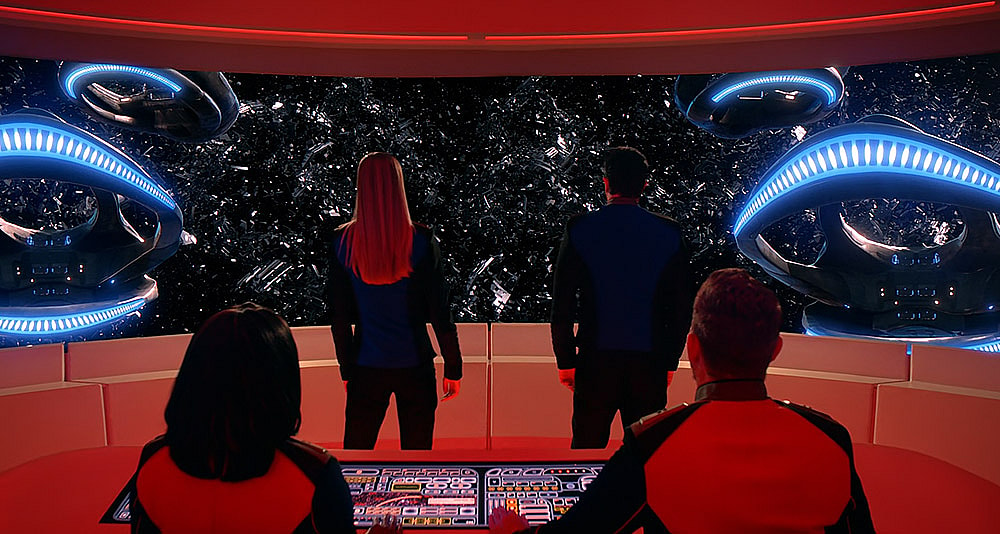
The Union quickly uses the device to force diplomatic talks with the Kaylon Primary. Their ultimatum is simple and logical – back down from their genocidal campaign, or face annihilation. The Kaylon agree to the terms, while ominously revealing that they intend to circumvent the technology and gain the upper hand once more.
Fearing this scenario might unfold, Admiral Perry steals the device and gifts it to the newly-formed Moclan and Krill alliance, hoping they will expand its capabilities and immediately destroy the entire Kaylon race without hesitation. This shifts the balance of power significantly in their favor, and Mercer is forced to switch tactics.

With the Kaylon now on the chopping block, Mercer suggests an alliance between the two that will spare them from extinction. The two devise a battle plan to attack a research facility headed up by Moclan scientist Dr. Kalba, who is attempting to reverse-engineer the technology.
What follows is a massive-scale galactic battle that is easily one of the best in recent sci-fi television. The all-out war between the Union and Kaylon vs. the Moclans and Krill is a sight to behold, and once the action revs into overdrive, it milks the moment for all it’s worth.

It also sets up one of the most predictable plot arcs in the entire season when one of the Orville’s crew members makes the ultimate decision to sacrifice her own life for the sake of the Union’s former enemies, the Kaylon. Her actions have a dramatic effect on diplomatic tensions moving forward, and although it’s traditionally cliché, I argue we could all use a bit of that in the modern age.
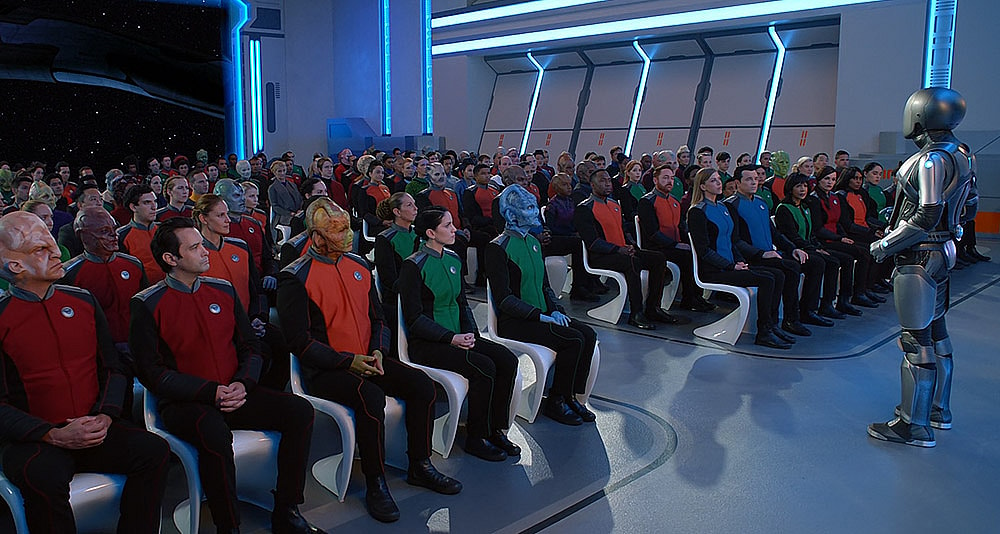
The episode ends with a Wrath of Khan-style funeral sequence that actually triggers intense emotions, especially when Isaac speaks a few words. In a lot of ways, it felt like the appropriate season closer, but unfortunately, there was one more episode left in the tank that failed to pay off as intended.
Episode 10: Future Unknown
The sadness of Future Unknown is how disjointed and messy it is as a narrative whole. After the monumentally epic space battle of the previous episode, this final entry in the season tries to tie up loose ends with a neat bow, but it doesn’t really pay off.
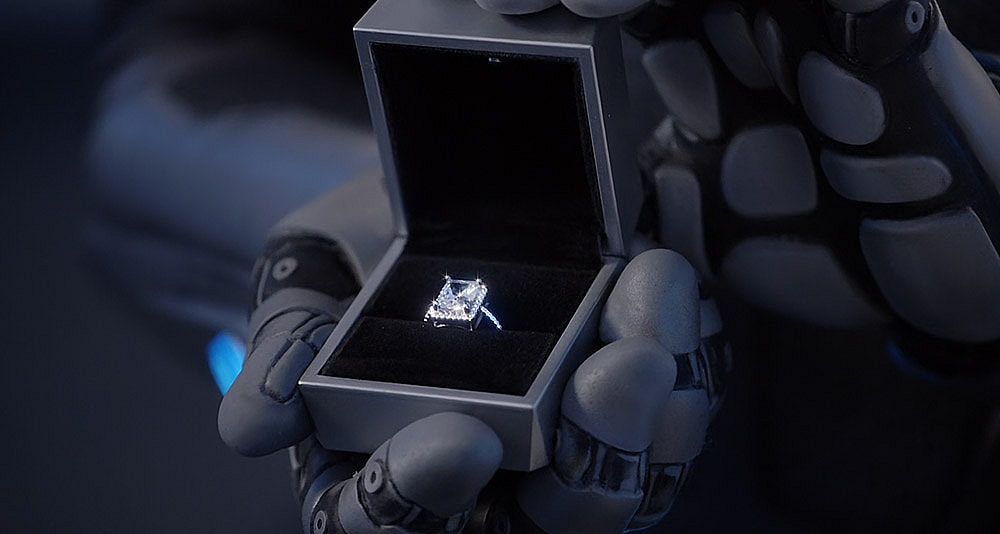
The main plot of the episode centers on Isaac popping the question to Claire, which came out of left field so much that even those who wanted to see the two crazy kids make a go of it had to do a double-take. Worse, they actually follow through with it, which can only lead to problems down the road.
A huge portion of the episode is spent on the girls and guys setting up bridal showers and bachelor parties, respectively, while trying to elicit as much laughter from the audience as possible in the wake of such a serious season. And indeed, there are a lot of laughs to be had – notably Klyden’s “hooray for you,” among others.

The second plot arc focuses on a (sort-of) return to Sargas 4, a planet explored in a previous Orville episode. The character Lysella from season one’s Majority Rule makes a return, but it’s not exactly clear as to why. She claims to want to flee her planet’s archaic social rule, but it isn’t long before guilt sets in.
When she tries to steal schematics for a number of technologically advanced Union devices, Kelly decides to show her the ugly truth of what happens when advanced cultures interfere with the development of lesser ones. It’s essentially Star Trek’s Prime Directive unveiled in rare form to demonstrate the consequences.
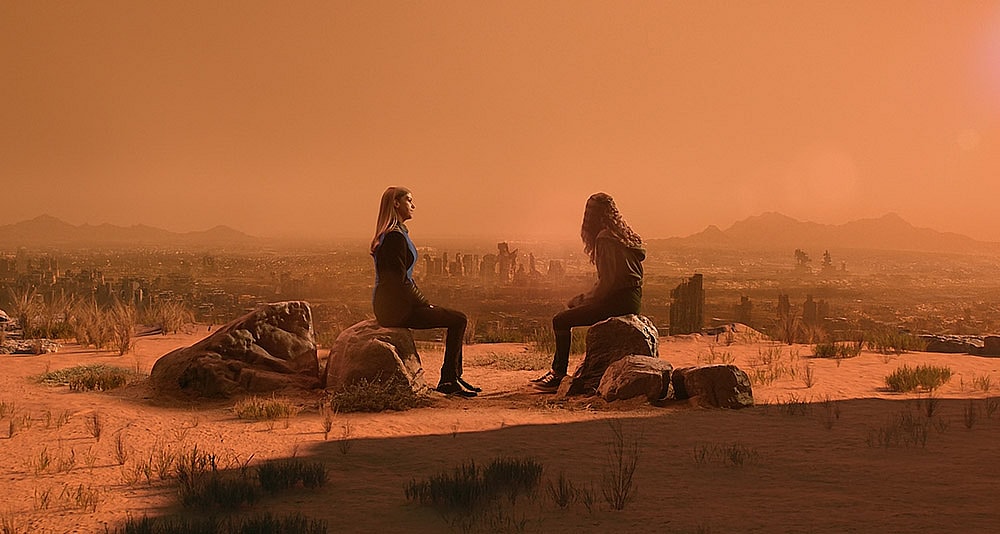
It’s also an attempt to take a stab at capitalism, albeit indirectly, while remarking about the current state of human nature. The messaging isn’t entirely wrong per say, but it is a bit hyperbolic and overblown to the point of inducing eyerolls. I will never get over the hilarious irony of Left-wing commentators railing against capitalism, while simultaneously making millions off of it.
Either way, the Lysella plot arc offers absolutely nothing to the story, except as a means to replace one departed character for another, but that’s not the worst of it. The real problem with this final episode of the season is just how conclusive and definitive it feels, and not in a good way.
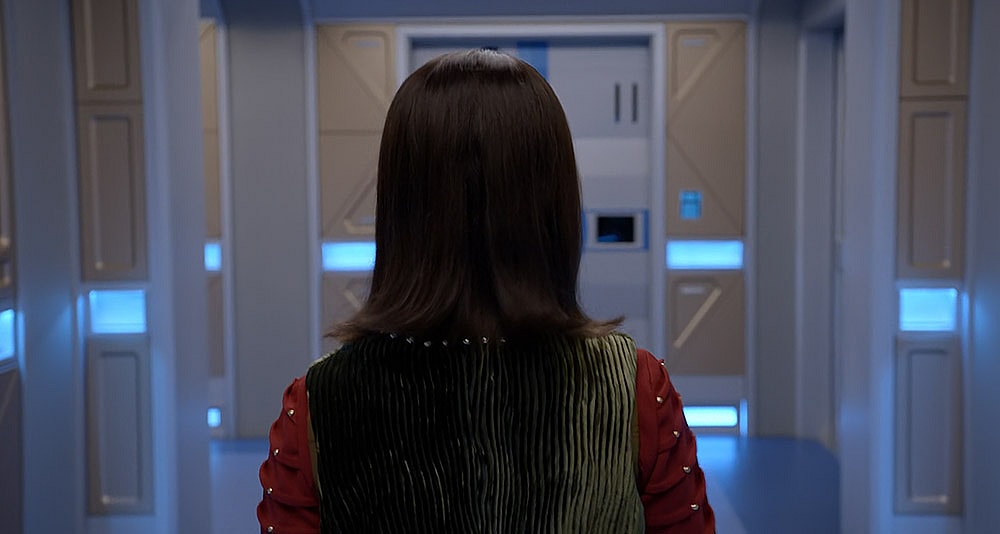
By the time the end credits roll, it becomes evidently clear that Seth MacFarlane doesn’t have a ton of faith in a fourth season being greenlit. As such, he appears to try and tie up as many loose ends as possible, while bringing back a previous Orville character for an unexpected, slightly awkward, yet otherwise enjoyable cameo.
However, it’s the wedding of Isaac to Claire that really drives a stake through the temple. There’s a reason why Star Trek: TNG flirted with the character of Commander Data entering a romantic relationship with a woman, only to see it backfire. The moment this scenario is forced to play out, it causes more problems than it solves.
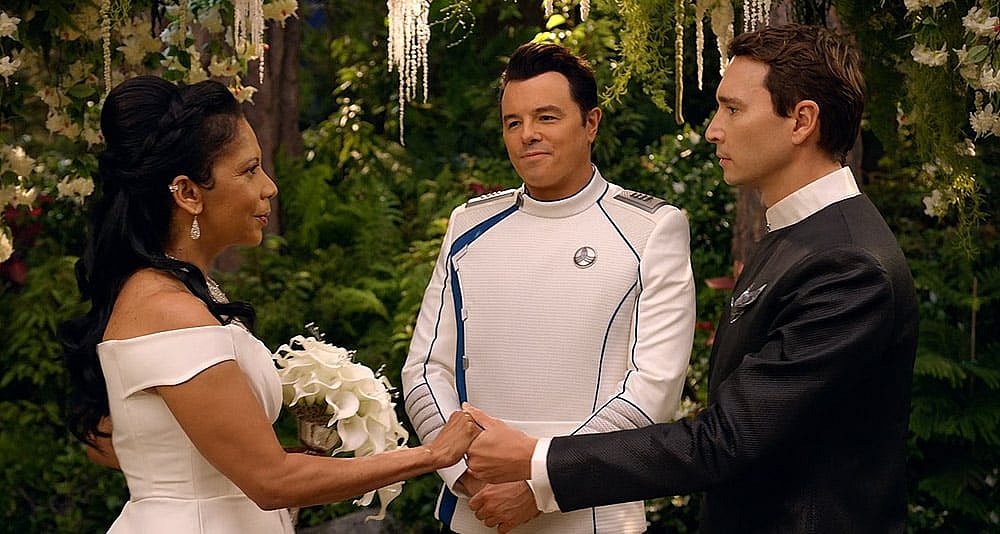
Ironically, this comes hot on the heels of episode 7, where Isaac briefly gains human emotions and bonds romantically with Claire, only for the technology to fail due to his model number. That was a good thing, as it showed what might have been, but what should never actually be. Future Unknown undoes all of that for the sake of happy feelings, but it feels downright weird and off-putting.
In Conclusion
All in all, season three of The Orville manages to score high for having the cajones to tackle subjects that would send most Hollywood creatives into screaming fits of terror. The latter season dials a lot of that back for the sake of rudimentary storytelling, but it’s a mixed bag in terms of quality.

Still, there’s a lot to be appreciated here, simply for the fact that whatever political leanings the writers and showrunners might have, every story can be successfully interpreted from both sides of the argument. The aforementioned lesbian queer-baiting is perhaps the only instance that sticks out like a groan-inducing sore thumb, while the rest is subtle.
As I said in my previous mid-season review of The Orville: New Horizons, this is about as good as it gets in an era of extreme Leftism permeating and poisoning every creative property imaginable. The over-politicization of every single thing in life is one of the reasons why The Orville continues to stand out.

Alas, the final episode of the season feels like MacFarlane has already nailed the coffin shut, and is merely waiting for a decision from his higher-ups as to whether to lower it into the ground. I hope not, because it would be a shame to lose a show that is so easy to get into, and harkens back to the Star Trek: TNG era in such a big way.

If not, then it’s been an enjoyable voyage thus far, and a testament to what happens when extremist politics are curbed in favor of a more inclusive narrative.
